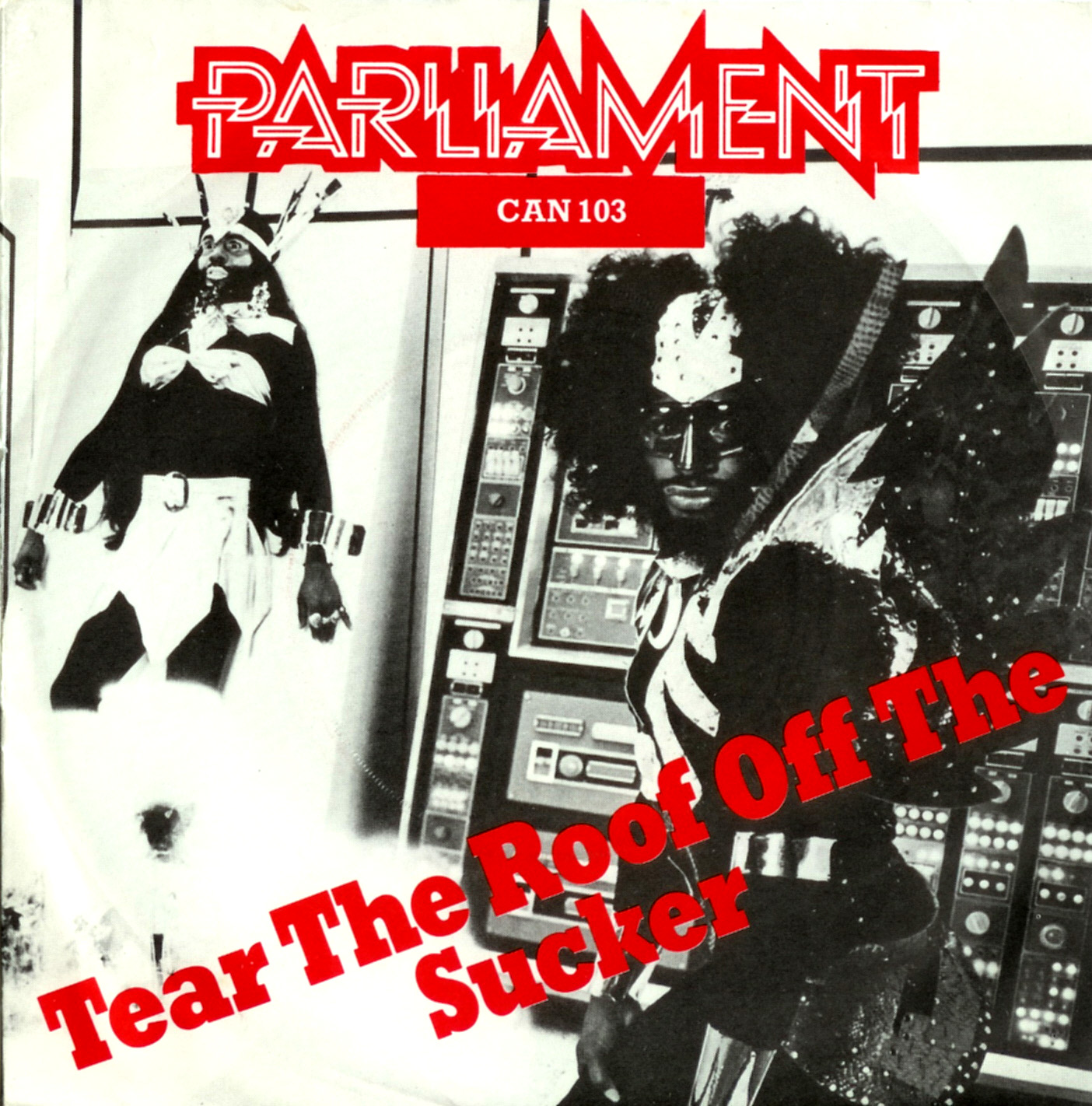- Give Up the Funk (Tear the Roof off the Sucker)
Infobox Single
Name = Tear the Roof off the Sucker (Give Up the Funk)

Caption = UK picture sleeve for the single "Tear the Roof off the Sucker (Give Up the Funk)"
Artist = Parliament
from Album =Mothership Connection
A-side =
B-side = "P. Funk (Wants to Get Funked Up) "
Released = April 1976
Format = 7" 45 rpm vinyl single
Recorded =1975
Genre =Funk
Length = 3:39 (single version) 5:45 (album version)
Label = Casablanca
856
Writer =Jerome Brailey
George ClintonBootsy Collins
Producer = George Clinton
Certification = RIAA certified million seller
Chart position =
* #5 R&B
* #15 Pop
Last single =
This single =
Next single =
Misc ="Give Up the Funk (Tear the Roof off the Sucker)" is a
funk song by Parliament. It was released as a single under the name "Tear the Roof off the Sucker (Give Up the Funk)". It was the second single to be released from Parliament's 1976 album "Mothership Connection " (following "P. Funk (Wants to Get Funked Up) "), and was the highest-charting single from the album. With its anthemic sing-along chorus, it is one of the most famousP-Funk songs. It also became Parliament's first certified million selling single.The bass vocal at the beginning of the song is performed by Ray Davis.
Analysis
The song is constructed using a jazz-influenced form. Three themes are stated at the beginning of the track:
A - "You've got a real type of thing" (usually using a syncopated bass line)
The three themes are stated briefly twice (8 bars each section), followed by a short (4-bar) break ("D"). With this exposition complete , Parliament explores each theme with greater interpretive freedom (beginning at 2:18). The A-Theme elaboration takes only 16 bars, after which the B-Theme is elaborated upon for 56 bars. During this elaboration, two new ideas are combined with the B-Theme (subthemes D and E):
B - "We want the funk" (a chorus of sorts; the bass is usually a near-double of the vocals)
C - "La la la" (bass as in B-Theme)D - "We're gonna turn this mother out"
Note that the three main themes are rarely layered on top of each other. The C-Theme elaboration lasts only 8 bars, and in fact is interpolated with the A-Theme (for 2 bars). With this development section complete, the three main themes are recapitulated (beginning at 5:18). A fadeout during this recapitulation ends the song with the B-Theme; the C-Theme may theoretically follow.
E - "Let us in we'll turn this mother out"Aside from the song's form, another jazz-like element is the degree of interactivity among the musicians. The bass frequently responds to vocal gestures, and the bass and synthesizer frequently interact. Likewise, the drums interact with the pitched lines.
Two main contrasting vocal timbres are heard in this song. The "norm" (used in themes A, B and D) is a throaty, loud timbre with casual enunciation and somewhat microtonal/bent pitches. An "alternative" timbre (found in themes C and E) uses a mannored exaggerated enunciation, with very clear pitches.
As with many of Parliament's songs, a full ensemble sound is obtained using few players; the song relies mainly on bass guitar, one synthesizer, and a drum kit. (Guitar, synthesizer pad, and brass are heard subtlely.) Many different vocal ensembles are found, most occurring in groups.
Appearances in media
"Give Up the Funk (Tear the Roof off the Sucker)" has been heard in a number of movies, including the opening and closing scenes of the film "
Undercover Brother ", in which the '70s-inspired protagonist, played byEddie Griffin , drives around in a classicCadillac . In the 2006 movie "Click ",Adam Sandler 's character performs the song while dancing. "Give Up the Funk" also appears in the salon renovation scene in "Beauty Shop ", the1998 film "Slums of Beverly Hills ", and the 2008 film "Cloverfield "."Give Up the Funk (Tear the Roof off the Sucker)" has also been used in a number of TV commercials, including Moro Nuts,
MasterCard 's new "Back to School" campaign, and ads for theHonda Odyssey .The
Seattle Mariners play "Give Up the Funk" atSafeco Field during home games, whenever one of the Mariners hits a home run. It is accompanied by flashing "Funk Blast" on the out-of-town scoreboard. This practice started during the 2006 baseball season.
Wikimedia Foundation. 2010.
